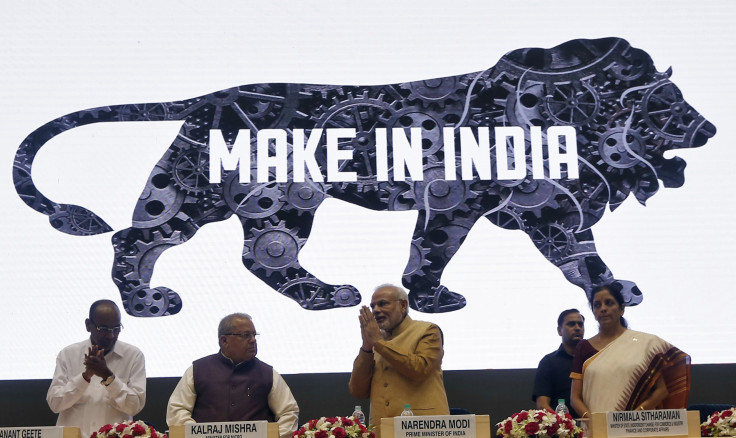India Regains 'Stable' Rating From S&P On Modi's Promises For Reform

The ratings agency Standard & Poor's on Friday upgraded its outlook on India’s credit market from negative to stable, two years after a downgrade. The move is fueling optimism for a revival of Asia’s third-largest economy as Prime Minister Narendra Modi prepares to renew strained ties with American investors and executives on his first official U.S. visit this weekend.
India’s economy grew at an annualized 5.7 percent in the first quarter of this year, from April to June, after staying under 5 percent growth for nearly two years, weighed down by high inflation, a weak rupee and a drop in foreign investment. The rating, which remains in the lowest investment grade, comes after India’s top finance minister said Friday the Indian economy can grow by more than 5.5 percent this fiscal year, which began in April. S&P said a return to such growth, if achieved, would justify another upgrade.
“The stable outlook for the next 24 months reflects our view that the new government has both the willingness and capacity to implement reforms necessary to restore some of India's lost growth potential, consolidate its fiscal accounts, and permit the Reserve Bank of India to carry out effective monetary policy,” S&P analyst Agost Benard said in the report.
Modi campaigned on promises to revive foreign investment, boost infrastructure, and cut India’s fiscal deficit target to 4.1 percent of gross domestic product by March by increasing tax revenues and partly privatizing some state-run companies.
S&P had earlier assigned India its lowest investment-grade rating with a negative outlook, but Modi’s government sought a credit ratings upgrade after reporting several positive macroeconomic indicators. India, along with Brazil, China, South Africa and Russia, now owns the lowest investment-grade rating with a stable outlook by the world’s three major credit agencies.
“The ratings on India reflect the country's strong external profile, combined with its democratic institutions and free press, both of which underpin policy stability and predictability,” S&P said.
The main constraints on India’s rating are its low wealth level per person, meaning a low tax base to carry a debt burden and a lower degree of policy flexibility due to a shortage of infrastructure and basic government services. But India has relatively little external debt and its central bank in recent years has rebuilt its foreign currency reserves to cover five and a half months of payments to foreign lenders. The previous Congress government as well as the country's central bank narrowed the country’s current account deficit with curbs on gold imports and inflation, helping renew foreign investment interest in India.
Modi arrives Friday to New York with a delegation of Indian business leaders and some of the world’s wealthiest billionaires, like oil, gas and manufacturing tycoon Mukesh Ambani, and will focus on attracting American investment and business partnerships to India to create jobs there that Modi promised in his election campaign.
On Thursday, Modi pushed for foreign and Indian investment in India’s manufacturing industry.
The success of the campaign, dubbed “Make in India,” will depend on the quality of infrastructure like power lines, highways and ports that are built to support a manufacturing hub, Nomura research analyst Sonal Varma said in a research note Thursday. It’s “a step in the right direction."
Varma forecasts that India’s economy will grow 6 percent in the 12 months ending April 2015.
“With government proactively taking measures to put the economy on high growth trajectory we see India at the cusp of a multiyear rise in growth,” Varma said.
The news comes as each of the country’s richest 100 people have become billionaires for the first time ever. A revived Indian economy could become a valuable partner to the U.S. as China becomes more assertive in trade policy.
© Copyright IBTimes 2024. All rights reserved.






















